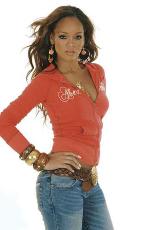Raqs Sharqi
In Turkey it is known as Oryantal Tansi and in Arab countries as Raqs Sharqi - translation, Oriental Dance. The French, during their occupation period of Egypt (1798 - 1801), called it "la danse du ventre", meaning "dance of the stomach".The misnomer was later translated into English as "Belly dance" by American promoter Sol Bloom. Sol was the Entertainment Director of the 1893 Chicago World's Fair. He used the term as an advertising hook to draw visitors to an exhibit called "The Streets of Cairo" that featured snake charmers, camel rides and dancers.At the time, society considered any description of the body to be socially unacceptable and Sol knew the term Belly dance would scandalize interest and ultimately increase his business. Along with the sensational label, barkers at the exhibit would hype the dance show by calling out outrageous lines like "every fiber and tissue in her entire anatomy shakes like a jar of jelly from your grandmother's thanksgiving dinner..." etc. They even went so far as to prohibit women from viewing the show, to further shock and titillate the public.Today, in the Near and Middle East, the dance continues to be referred to as Oriental dance. However, outside of those regions you will find different labels attached to the art form. It is called, among other things, Middle Eastern, Mid Eastern, Mid Eastern Oriental, Near Eastern, Oryantal tansi, Raqs sharqi, Oriental, Belly and Belly dance.Legitimate points exist in support of, or opposition to, a particular label. Examples include but are not exclusive to:The desire to create a positive connotation with the term Belly dance by "honoring the abdomen as the center from which new life emerges". The term Belly Dance perpetuates a promoter's description founded in "racism, colonialism, and mid-Victorian Orientalist misconception". Society has a preconceived notion of the term Belly Dance, a notion not based in knowledge but in media stereotyping, imagination, or misinformation. Middle Eastern Dance designates a cultural and geographical area the general public can readily identify. Oriental dance is a folk dance belonging to a specific ethnic group. It is the artist's obligation to label the dance as that ethnic group labels it.When considering labels, weigh the fusion factor. Many artists blend flamenco, jazz, ballet, or African movements with Oriental dance. In those cases, it is no longer purely Oriental dance. Perhaps a label that reflects the multi-cultural forms of movement should be used.With an informed perspective, you can share what the dance is called in the Middle East, where the term Belly Dance came from, and why you choose to call it what you do. Knowledge reshapes perception, bringing society's notion from "dance of seduction" to "family oriented art form".

0 Comments:
Post a Comment
<< Rihanna Home